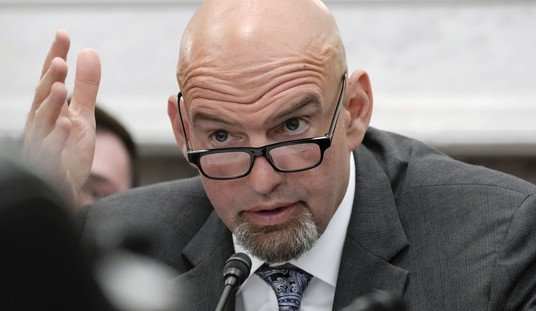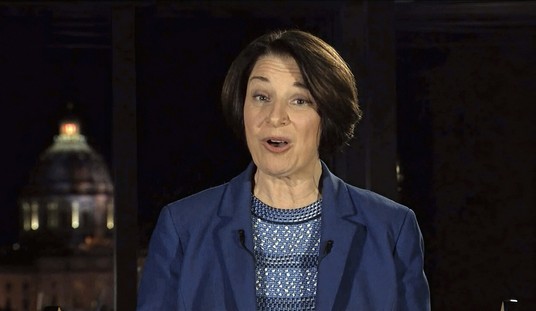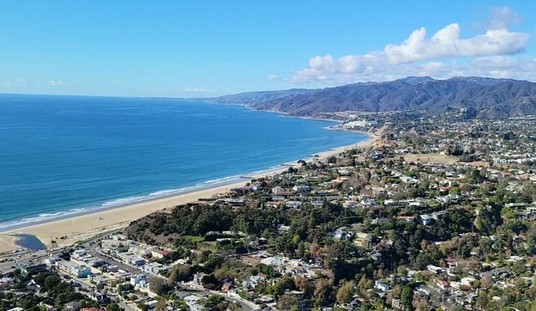This is…golly. So many adjectives spring to mind – amazing, gobsmacking, horrifying, terribly sad, infuriating, frightening…they all work and dozens more like them.
This shouldn’t be happening.
AZ: “I am happy to come to America…”
Give this a watch from start to finish—From people here alone to work, to guys in Gucci—Hundreds of single adults are out here waiting to be transported/processed.
They are from all over—Senegal, Congo, Gambia, Angola, Guinea, Liberia,… pic.twitter.com/NUgCe7le5G
— Ali Bradley (@AliBradleyTV) December 21, 2023
Hola to the illegals from Central America – at least they’re basically locals. But Angola? Zambia? it’s damn near the whole continent.
How are these hordes, literally hordes, of Africans appearing at our southern border?
— Oilfield Rando (@Oilfield_Rando) December 20, 2023
Part of it is NGOs facilitating these people’s exit from Africa, and those organizations are easy to blame. Their meddling might explain scenes like this one.
NEW: A man from Guinea who had just crossed illegally into Lukeville, AZ tells me he plans to go to Philadelphia. When I asked why, he didn’t know, and pulled out a piece of paper w/ an address written on it he’s supposed to go to. We looked it up, it’s a local community center. pic.twitter.com/kru5Ad6sak
— Bill Melugin (@BillMelugin_) December 21, 2023
But in most cases, much of it is duplicitous, left-wing Central and South American governments, and as simple as word of mouth. Safer, more expedient transit routes and tips are now shared like lightning among groups and interested nationalities through social media, even as governments basically eliminate foreign visa entrance requirements.
For instance, if you made it to South America, one of the most harrowing portions of the journey to the US border would have been passage through something called the “Darien gap.” That’s the geographic region of the Isthmus of Panama which connects Panama to Columbia and the South American continent. It’s contains a large watershed, covered by the Darien jungle, and has sincere mountains among other naturally perilous hazards to life and limb. It is so ruggedly wild that it effectively interrupts the Pan-American Highway. That section has never been built, nor are they planning to.
As the pace of illegals heading for the US multiplied exponentially over the past few years, the trek through the pass has become worn and easier to follow, but still deadly.
Once nearly impenetrable for migrants heading north from Latin America, the jungle between Colombia and Panama this year became a speedy but still treacherous highway for hundreds of thousands of people from around the world.
Driven by economic crises, government repression and violence, migrants from China to Haiti decided to risk three days of deep mud, rushing rivers and bandits. Enterprising locals offered guides and porters, set up campsites and sold supplies to migrants, using color-coded wristbands to track who had paid for what.
Enabled by social media and Colombian organized crime, more than 506,000 migrants — nearly two-thirds Venezuelans — had crossed the Darien jungle by mid-December, double the 248,000 who set a record the previous year.
Before last year, the record was barely 30,000 in 2016.
Thanks for that, POTATUS.
What is helping to keep even the record setting transit pace down are those messages sent to fellow potential travelers via tweets, etc. This is especially true for travelers from Africa. Contained in the advice is also word on who has the easiest entry requirements, which enables migrants to circumvent the more stringent countries and, in some cases, forego a trip through the gap entirely.
…After discovering that Nicaragua had lax visa requirements, Cubans and Haitians poured into Nicaragua on charter flights, purchasing roundtrip tickets they never intended. Citizens of African nations made circuitous series of connecting flights through Africa, Europe and Latin America to arrive in Managua to start travelling overland toward the United States, avoiding the Darien.
The word about Nicaragua opening their doors a bit wider as a point of entry flew through communities.
Aissata Sall was scrolling through WhatsApp in May when she first learned about the new route to the United States. For Ibrahima Sow, the discovery came on TikTok a few weeks later.
By the time their paths crossed at the tidy one-story brick house in Cincinnati, they had encountered hundreds of other Mauritanians, nearly all of them following a new path surging in popularity among younger migrants from the West African nation, thanks largely to social media.
“Four months ago, it just went crazy,” said Oumar Ball, who arrived in Cincinnati from Mauritania in 1997 and recently opened his home to Sow, Sall and more than a dozen other new migrants. “My phone hasn’t stopped ringing.”
The spike in migration was made possible by the discovery this year of a new route through Nicaragua, where relaxed entry requirements allow Mauritanians and a handful of other foreign nationals to purchase a low-cost visa without proof of onward travel.
Cheap and easy. Nicaragua has them pouring through the doors and headed our way. I wonder what the country is making on these visa sales?
…The migrants hailed from Mali, Angola, Guinea and Senegal, and almost all said they knew about the dangers of Darien, which can only be traversed on foot.
…”When I started planning my trip I told myself: I don’t want to die there,” said a 32-year-old migrant from western Mali, who explained he had fled the country due to war and violence.
“I want to live safely,” he said from a shelter in Tijuana, claiming to have paid a trafficker more than $10,000. He asked to remain anonymous for security reasons.
Sitting outside a bus terminal in Oaxaca city, Souleymane, a 29-year-old Senegalese man who asked to be identified by his first name only, said that relatives in New York had paid for his passage to Nicaragua. Souleymane gestured that it had been exorbitantly expensive, though he declined to give the amount.
…Several migrants said they found out about the alternate route through social networks and from human traffickers.
Traditionally many people trying to reach the United States have flown into Brazil or other South American countries, but knowledge of this alternate route has spread through word of mouth.
Authorities in Nicaragua did not immediately respond to a Reuters request for information on the issue.
I’ll bet Nicaraguan officials didn’t want to talk to Reuters. They’re probably wondering why Biden hasn’t put the foreign aid hammer down on them yet. So far we’ve given them almost $32M this year.
Columbia’s not helping, either.
➡️ Durante su paso por #África, Francia Márquez firmó un convenio en el que Colombia eliminaría las visas de tránsito para algunos países, entre ellos Guinea. 🇬🇳🇨🇴
➡️¿Esta es la razón de la crisis migratoria? Aquí la información: https://t.co/Ds5bFKpe42 pic.twitter.com/IyeEbQq4Ch
— Canal 1 (@Canal1Colombia) December 20, 2023
Even though Africans who arrive there would have to transit the Darien gap, maybe the rates going into Bogotá would be so much cheaper it would be worth taking your shot, regardless. Judging by the problems the Columbians are having at the airport there, they may have out-clevered themselves rejiggering their visa system to allow the flood of Africans. It’s looking as if quite a few of them aren’t inclined to leave the area and head out to the jungle just yet.
Or if they do leave, what they leave behind has the Columbians in a lather.
In less than two days, there have been cases of African children who have been abandoned at the El Dorado Airport in Bogotá . Our program Sin Carreta, we revealed that the last visit of the vice president of Colombia, Francia Márquez , to Africa, would have been involved with this situation.
In recent weeks, at the capital’s airport, crises have been reported involving people of African origin, who take advantage of the migration halls to rest and recover energy, in order to reach El Salvador and meet their final objective. , the American dream in the United States.
But why do they come to Colombia? In the month of May of this year, the vice president of Colombia, Francia Márquez, visited Africa on a very controversial tour through South Africa, Kenya, Ethiopia ; space where an agreement was signed that made Colombia eliminate transit visas for some countries; including Guinea, where many Africans who have set foot on national territory come from.
Between Columbian President Gustavo Petro and Nicaraguan President Daniel Ortega, you’ve got two leftist guerilla revolutionaries who are only too happy to flood the United States border – by extension, the country – with whatever human waves they can push our way. No doubt they intentionally unload some of their own problem children, while exporting their communist ideals mixed in with true believers the crowd. Chaos agents, even – of their government or others.
Secretary Ray Mayorkas signed an agreement with Panama and Columbia in April that was intended to do something about the mass of humans moving through the Darein Gap.
…Today, Panamanian Minister of Foreign Affairs Janaina Tewaney, Colombian Minister of Foreign Affairs Álvaro Leyva Durán, and U.S. Secretary of Homeland Security Alejandro N. Mayorkas led high level delegations and met in Panamá City to discuss joint efforts to address one of the most pressing issues in the region: irregular migration. The U.S. delegation included Administrator of the U.S. Agency for International Development Samantha Power, Commander of U.S. Southern Command General Laura Richardson, and senior representatives from across the Administration.
…Through this coordinated sixty-day campaign and sustained cooperation, the three governments will seek to achieve the following ambitious goals:
!. End the illicit movement of people and goods through the Darién by both land and maritime corridors, which leads to death and exploitation of vulnerable people for significant profit.
2. Open new lawful and flexible pathways for tens of thousands of migrants and refugees as an alternative to irregular migration.
3. Launch a plan to reduce poverty, improve public service delivery, create jobs, and promote economic and sustainable opportunities in border communities in northern Colombia and southern Panamá, through international partnerships across financial institutions, civil society, and the private sector.
“Open new lawful and flexible pathways,” huh? The very next month, the VP of Columbia was in Africa signing that retooled entry agreement, and Africans are safely pouring in, even if there is the unfortunate odd bamabino left at the airport in Bogotá every now and then.
Now, that’s “flexible.”
Have you ever wondered who this administration is working for?
Because it sure ain’t us.







Join the conversation as a VIP Member